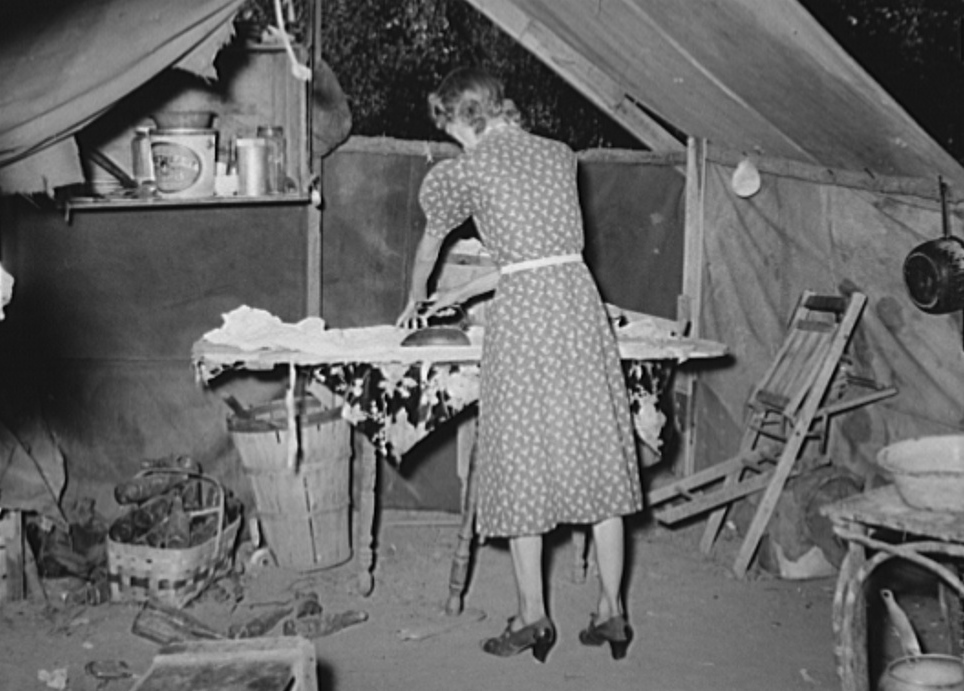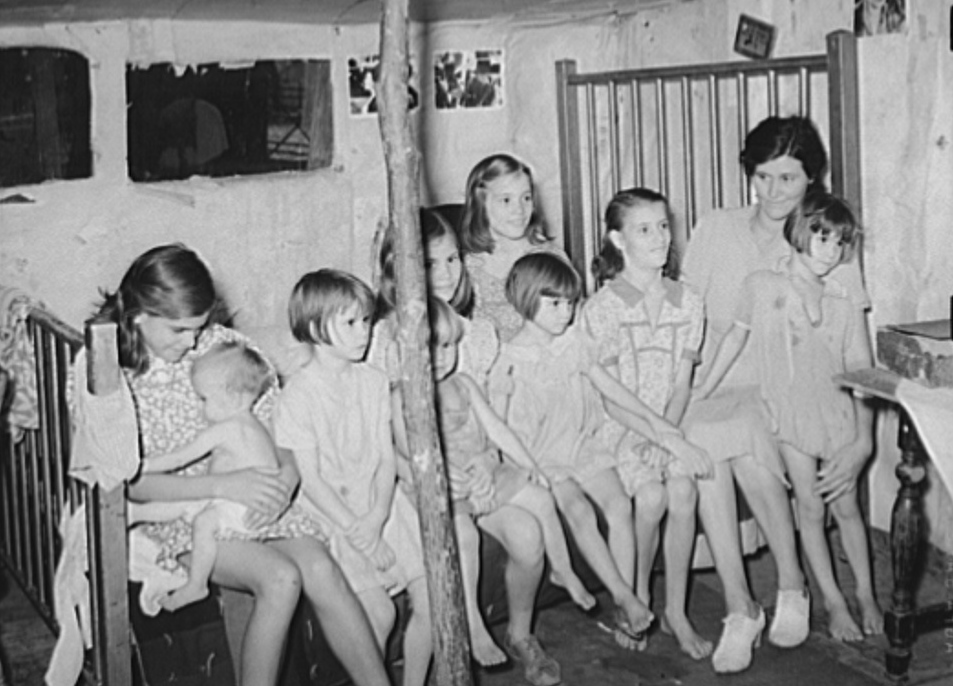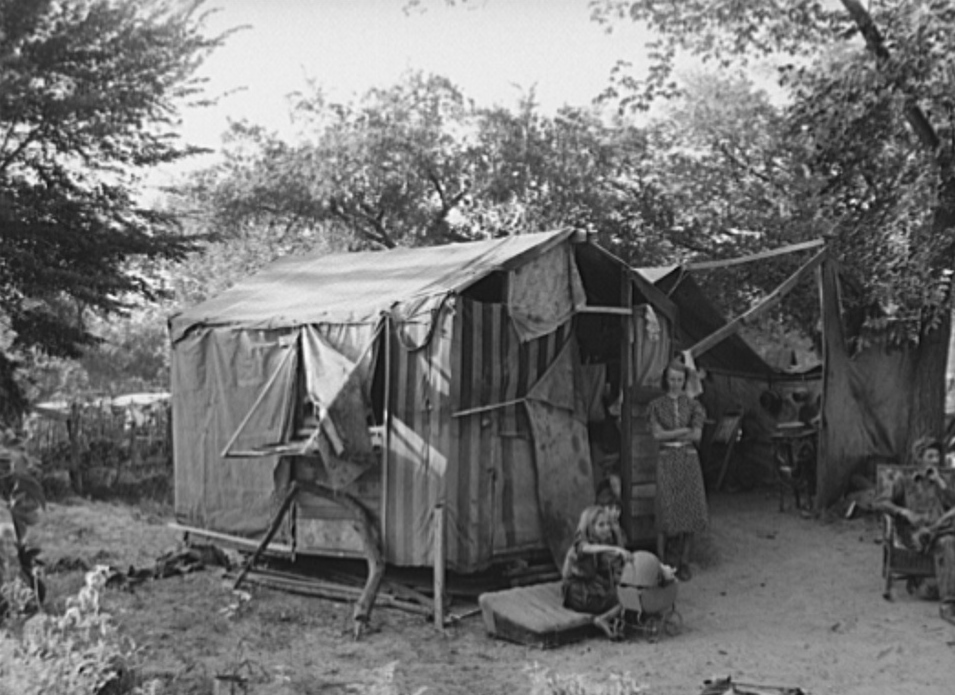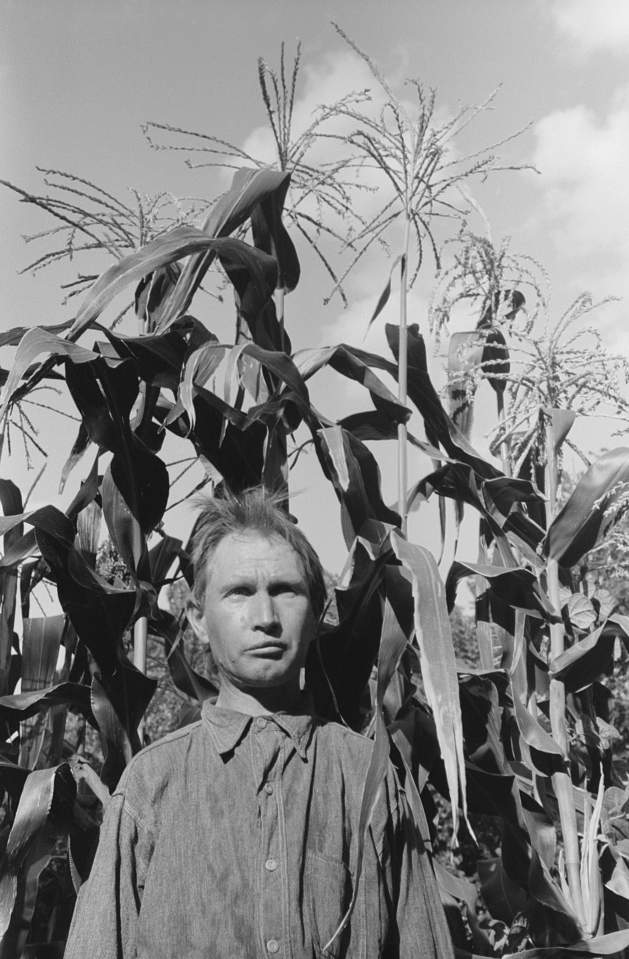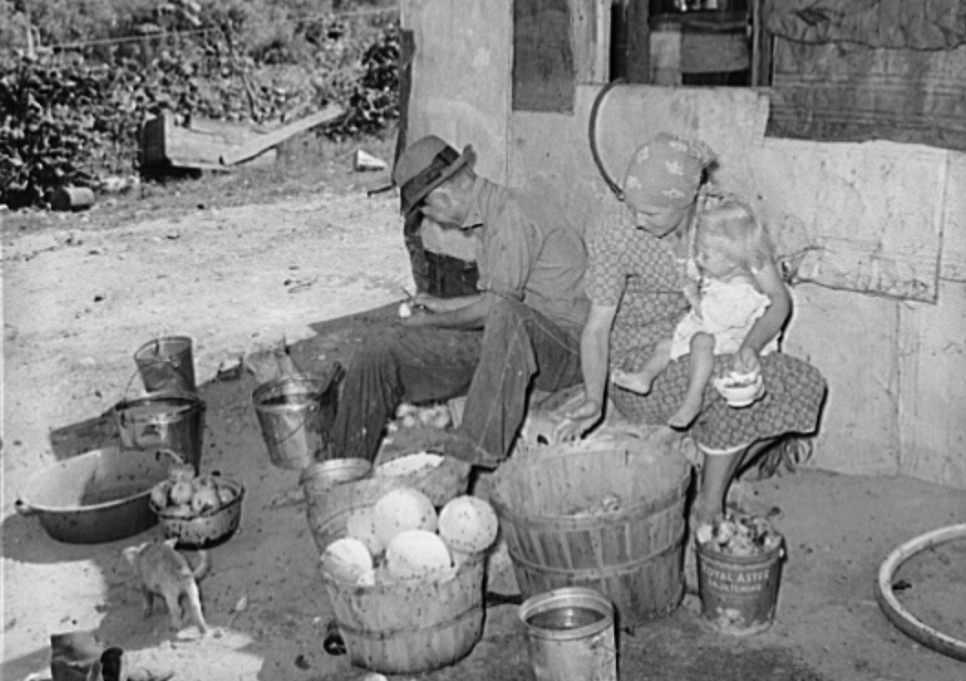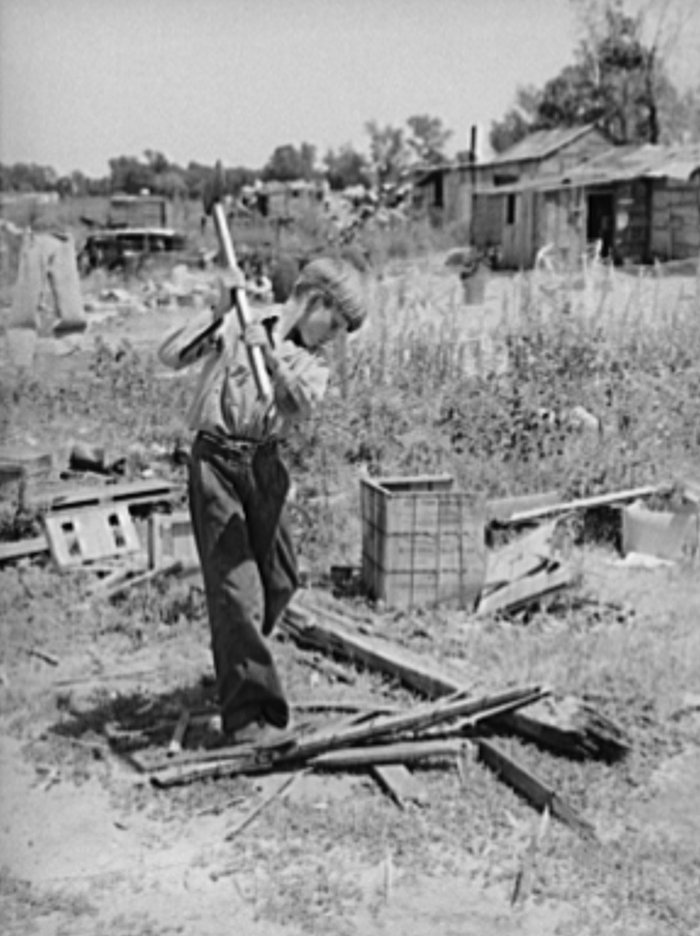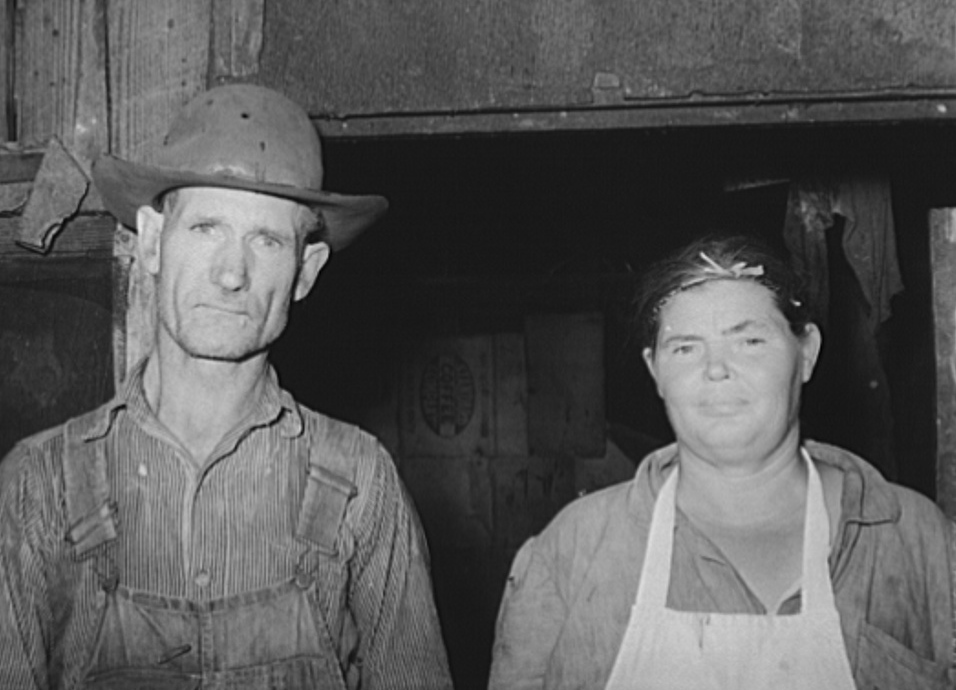Homelessness in America has always been a problem, but in the 1930s after the Great Depression and the during the drought years of the Dust Bowl, people suffered severely.
Family living in a community camp, Oklahoma City, Oklahoma. Father was in the hospital with broken back received when he fell from roof on which he was applying shingles, July 1939
Before the 1930s, support for the elderly was a matter of local, state and family rather than a Federal concern (except for veterans’ pensions). However, the widespread suffering caused by the Great Depression overwhelmed private charities’ and local government’s ability to provide food, clothing, and shelter for the needy.
On January 17, 1935, President Franklin D. Roosevelt sent a message to Congress asking for “social security” legislation. But it was obviously, too little, too late for these people.
Tent home of a family living in May Avenue community camp, Oklahoma City, Oklahoma 1939
By 1935, rural migrants and unemployed workers had built massive shanty towns such the May Avenue Camp in Oklahoma City, Oklahoma as they tried to survive.
Shack home and yard, Mays Avenue camp, Oklahoma City, Oklahoma. Notice crude fence made of old water boilers and discarded fencing.
These photographs were made in July and August of 1939 of Mays Camp by Farm Administration photographer, Russell Lee.
Agricultural day laborer standing in corn which he grew near his tent home in community camp, Oklahoma City, Oklahoma
Family eating breakfast. Mays Avenue camp, Oklahoma City, Oklahoma
A well was the water supply for about a dozen families at Mays Avenue camp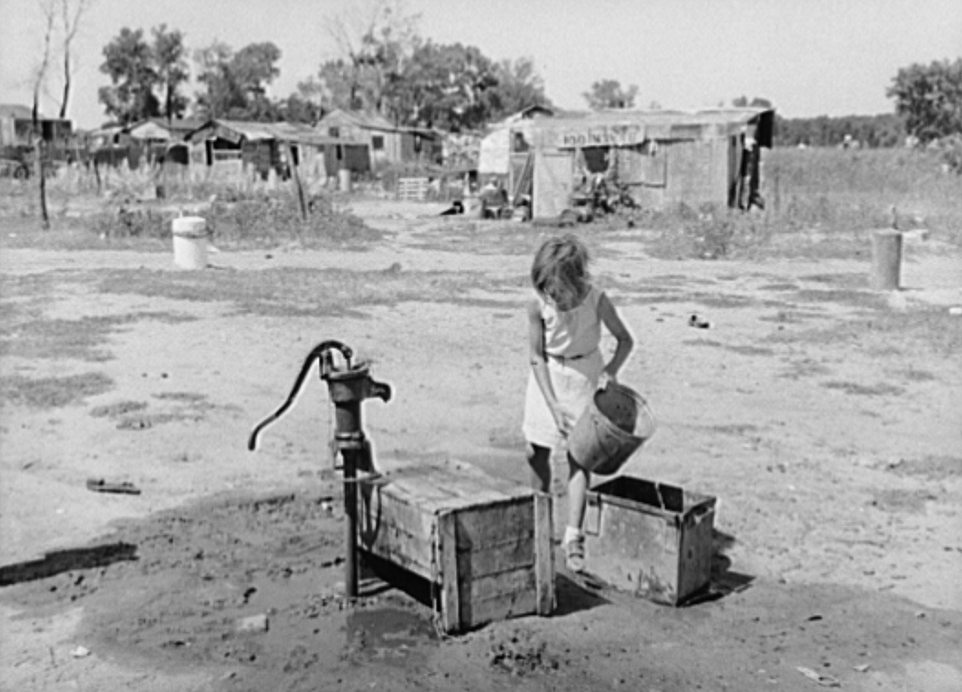
Children of Mays Avenue camp pumping water from thirty-foot well which supplies about a dozen families, Oklahoma City, Oklahoma – Notice the flour sacks they are wearing.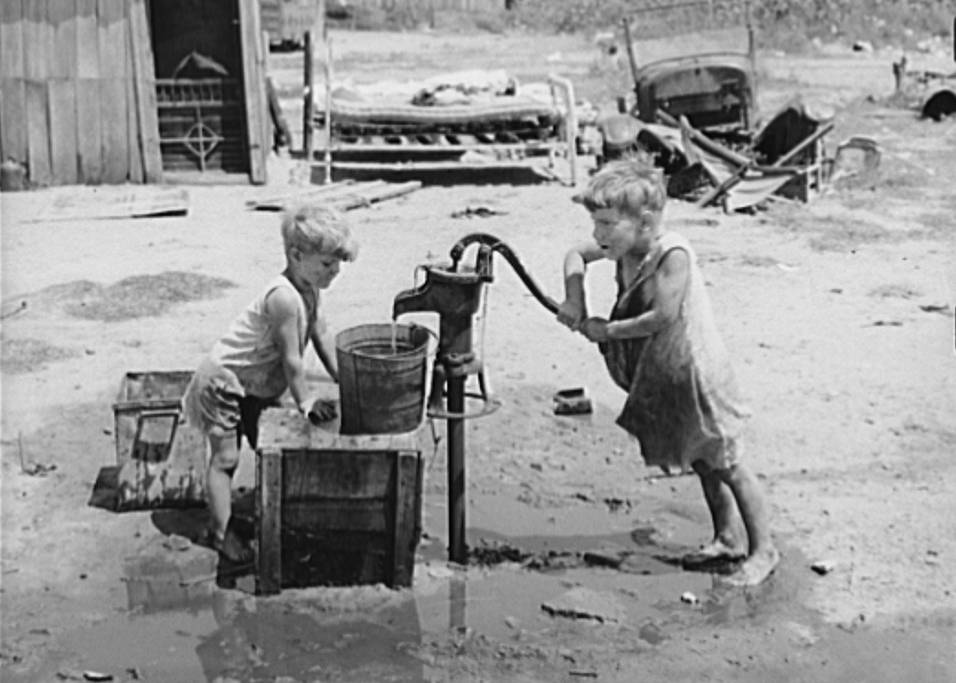
Children of Mays Avenue camp dressed in old sacks. Their father is a trasher, Oklahoma City, Oklahoma. He picks through trash to find items to sell.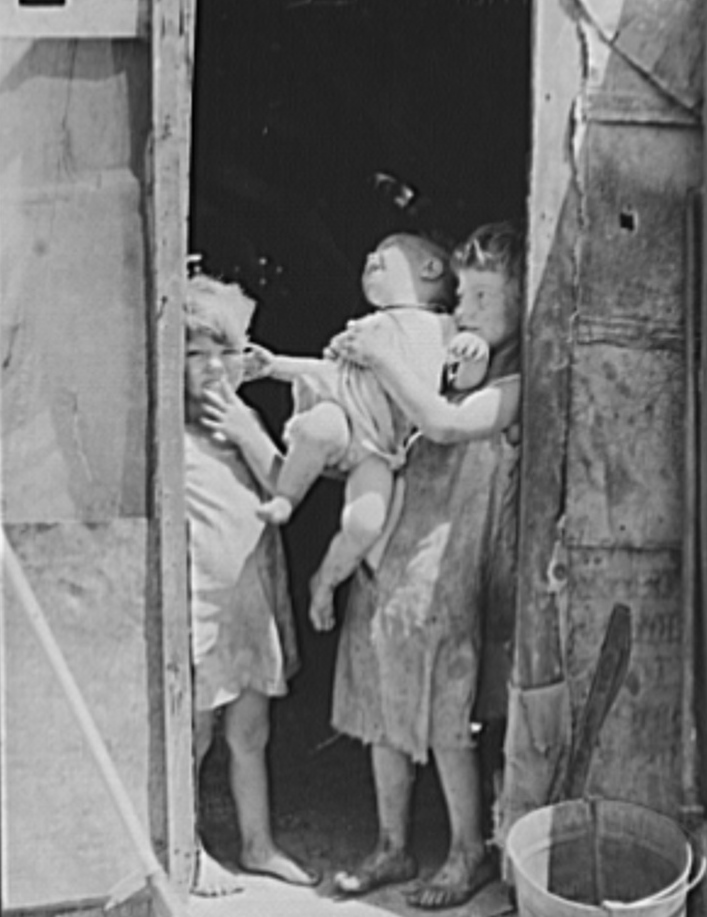
The state of Oklahoma was hit hard by the Dust Bowl during the droughts of the 1930’s.The drought and erosion of the Dust Bowl affected 100,000,000 acres that centered on the panhandles of Texas and Oklahoma and touched adjacent sections of New Mexico, Colorado, and Kansas.
The Dust Bowl forced tens of thousands of families to abandon their farms. Some still had relative good clothing and tried to maintain a semblance of their previous life even in shacks and tent homes. Many of the people in the photographs were home owners only a few years ago.
Woman ironing in tent home. Community camp, Oklahoma City, Oklahoma
Woman preparing breakfast in shack home. Mays Avenue camp, Oklahoma City
Resident of Mays Avenue camp making biscuits. Oklahoma City, Oklahoma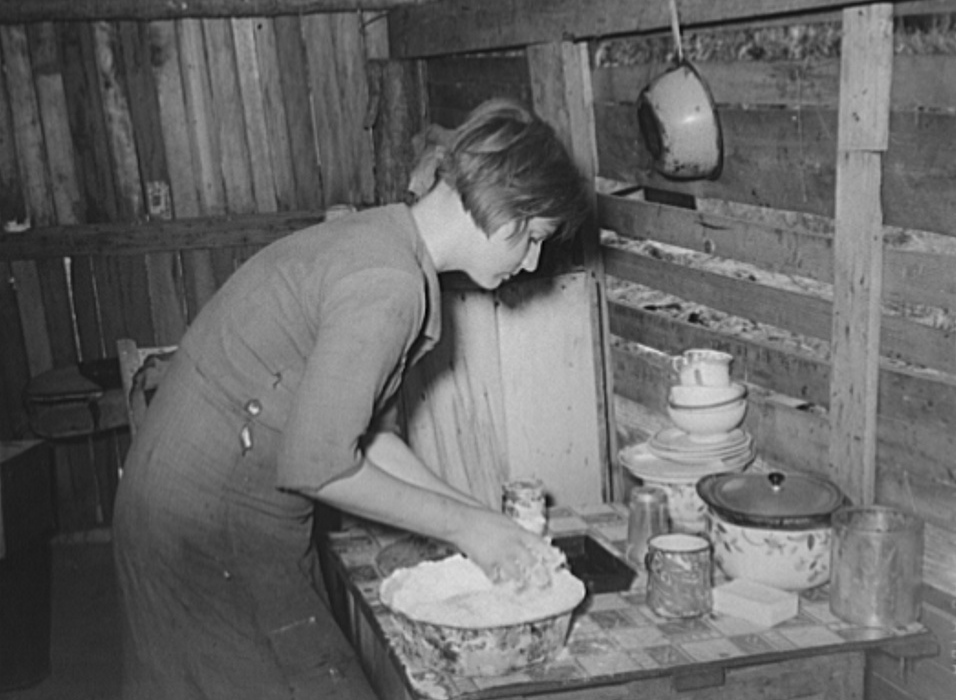
Children taking bath in their home in community camp. Oklahoma City, Oklahoma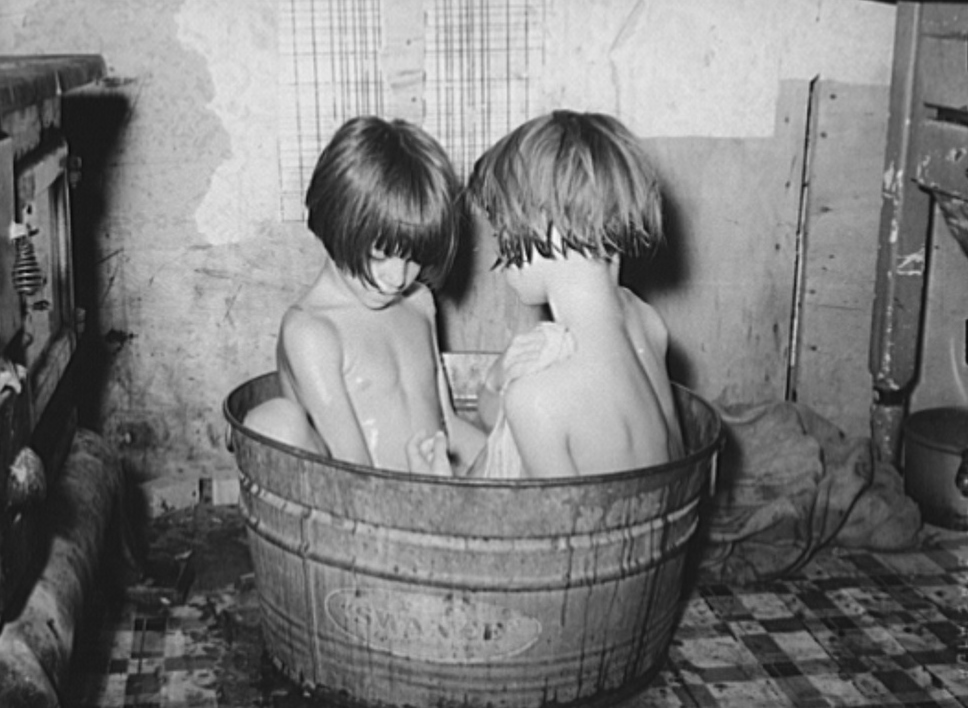
Daughter of family living in Mays Avenue camp. Oklahoma City, Oklahoma. This family had been farmers in Oklahoma until four years ago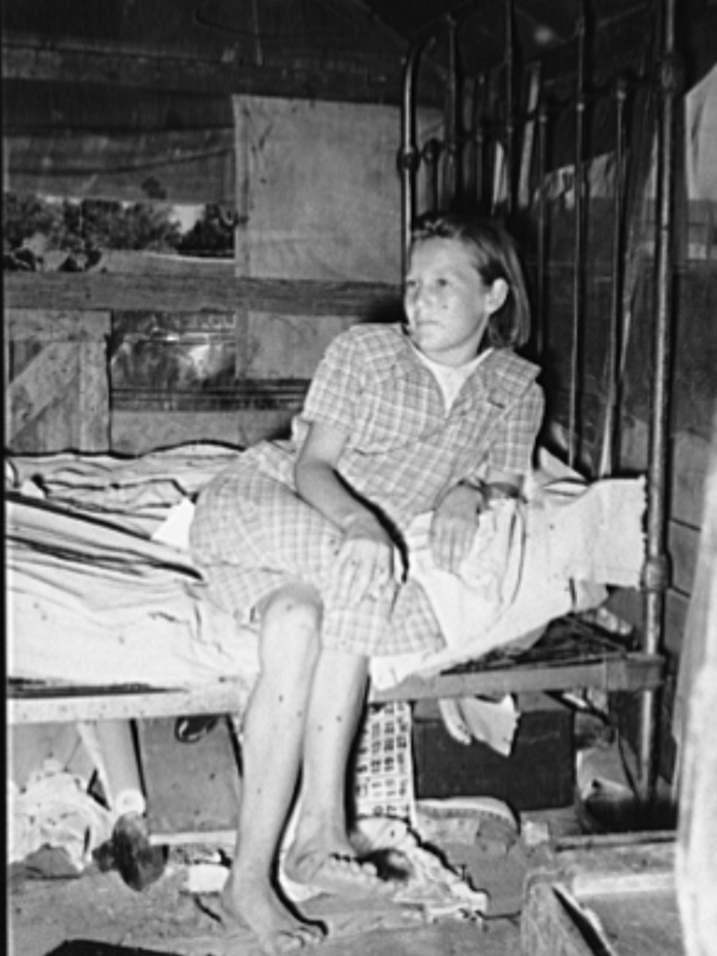
This man had been a farmer in Oklahoma until four years ago. Since then his family lived in this community camp getting some food from the vegetable dumps, doing trashing and going on the road occasionally as migrant workers. They went to Arizona several times to pick cotton.
“A federal welfare system was a radical break from the past. Americans had always prided themselves on having a strong sense of individualism and self-reliance. Many believed that those who couldn’t take care of themselves were to blame for their own misfortunes.”
Boy living in Mays Avenue camp with homemade axe Oklahoma City, Oklahoma
Boy living in Mays Avenue camp, Oklahoma City, Oklahoma, chopping wood
Water peddler in community camp. Oklahoma City, Oklahoma. He is paid fifteen cents a barrel for delivering water to the shack homes
Pop stand of children in community camp. Oklahoma City, Oklahoma
However, “skilled workers, business owners, successful farmers, and professionals of all kinds found themselves in severe economic difficulty as one out of four in the labor force lost their jobs. Words like “bewildered,” “shocked,” and “humiliated,” were often used at the time to describe increasing numbers of Americans as the Depression deepened.”
Father and mother of large family who make their living by collecting old vegetable crates and selling them to others in camp for building material.
Without a financial safety net, whole families were left destitute.
Beds seem to be the only furniture in the tents and shacks. I wondered why the beds were outdoors then realized that with the drought, they didn’t worry about rain.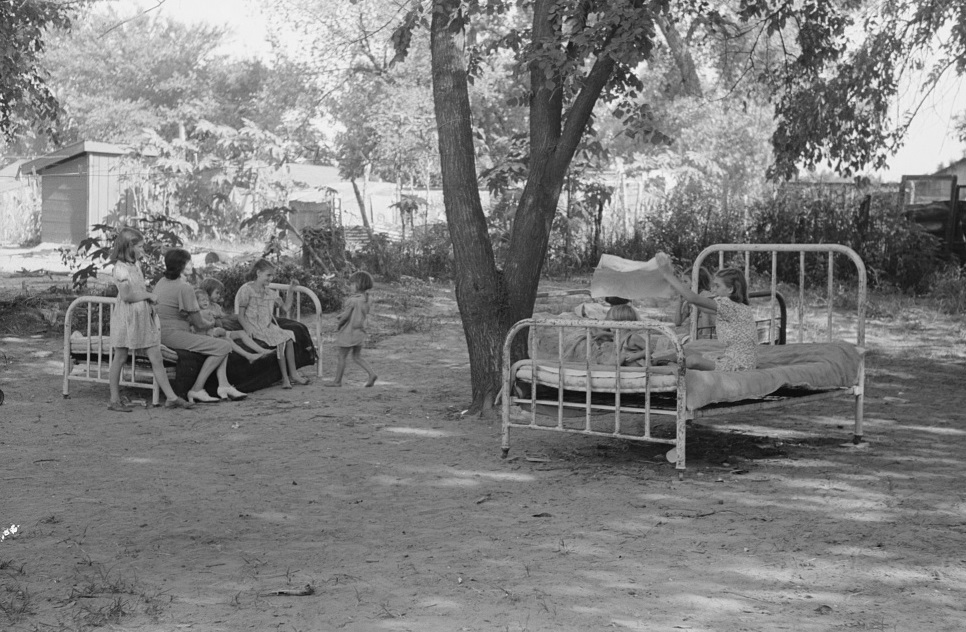
Bed with roof over it in Mays Avenue camp. Oklahoma City, Oklahoma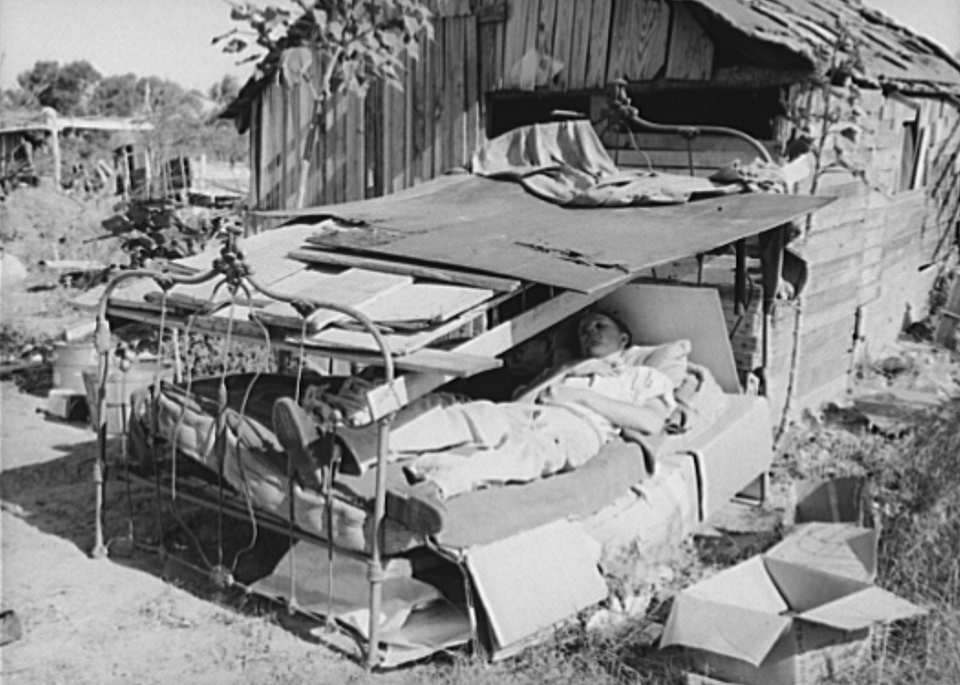
Mother fanning child with old hat to keep off flies. Mays Avenue camp, Oklahoma City, Oklahoma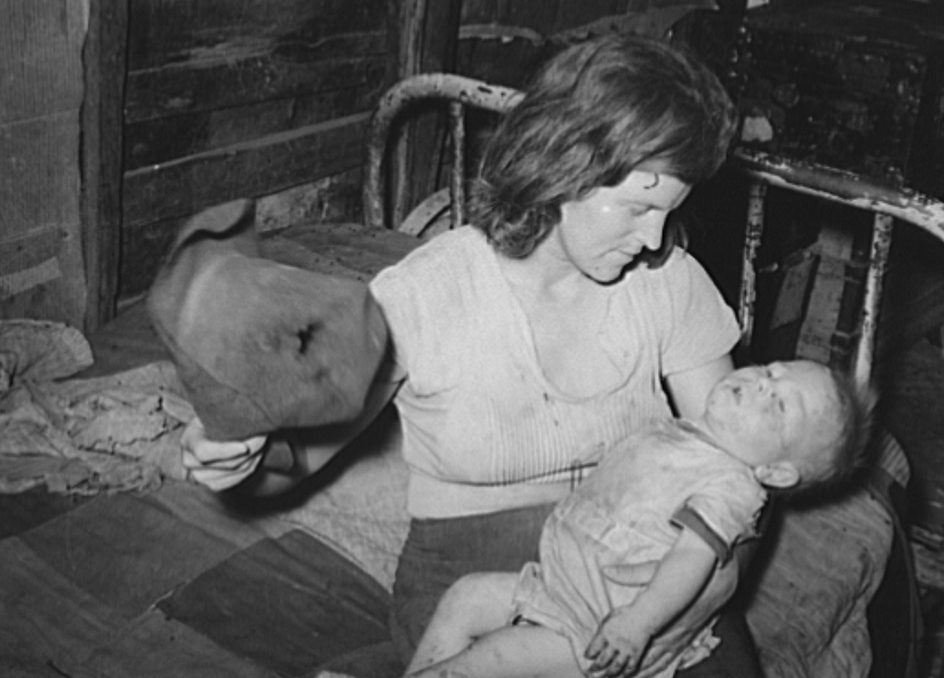
Partially-paralyzed man in May’s Avenue camp, Oklahoma City, Oklahoma July 1939
Camp Mays was on the outskirts of Oklahoma City over the City Dump and a Hog wallow which added attributed to disease and injuries.
City dump, Oklahoma City, Oklahoma. It was on top of such as this that the Mays Avenue camp was built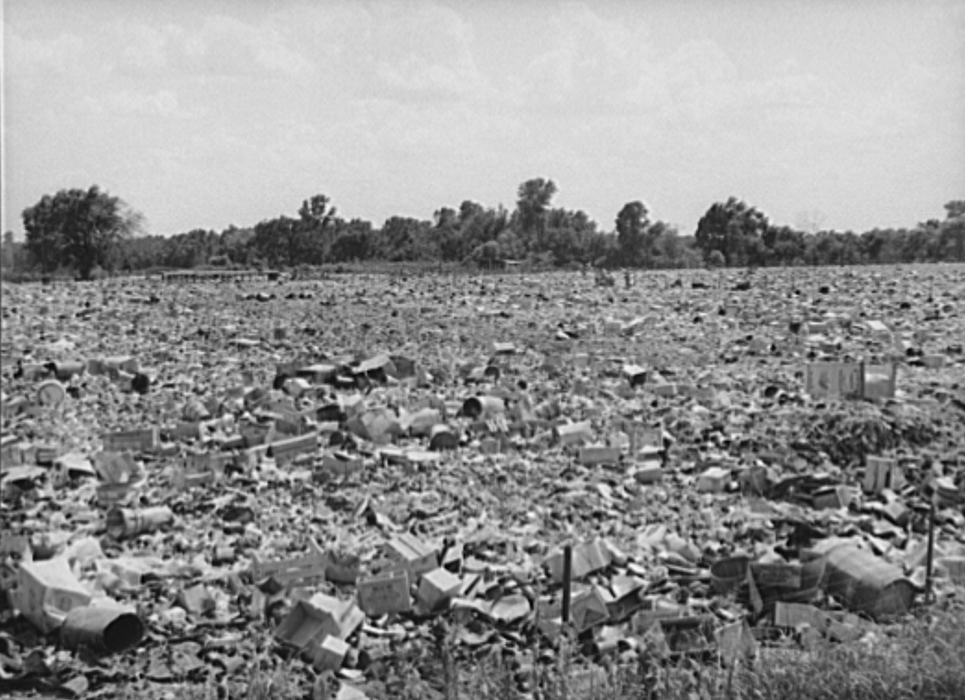
Hog pen and wallow adjacent to city dump. Oklahoma City, Oklahoma. Man who owned hogs rents land from city and also the privilege of feeding them from city dump. Near Mays Avenue camp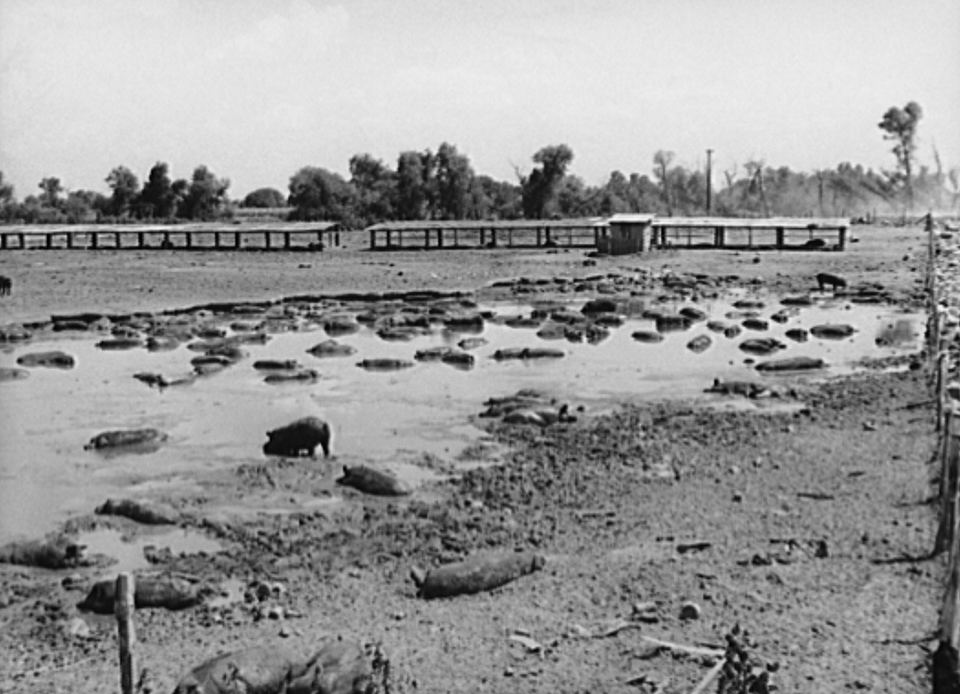
Part of Mays Avenue camp with dump in foreground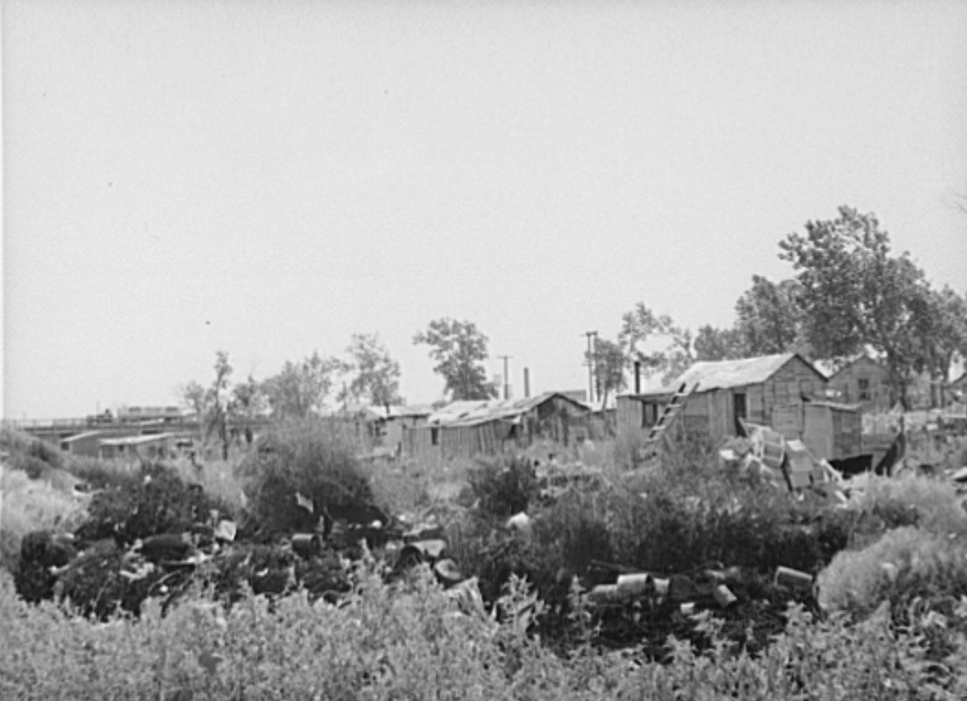
Family in front of shack home living in Camp May, Oklahoma City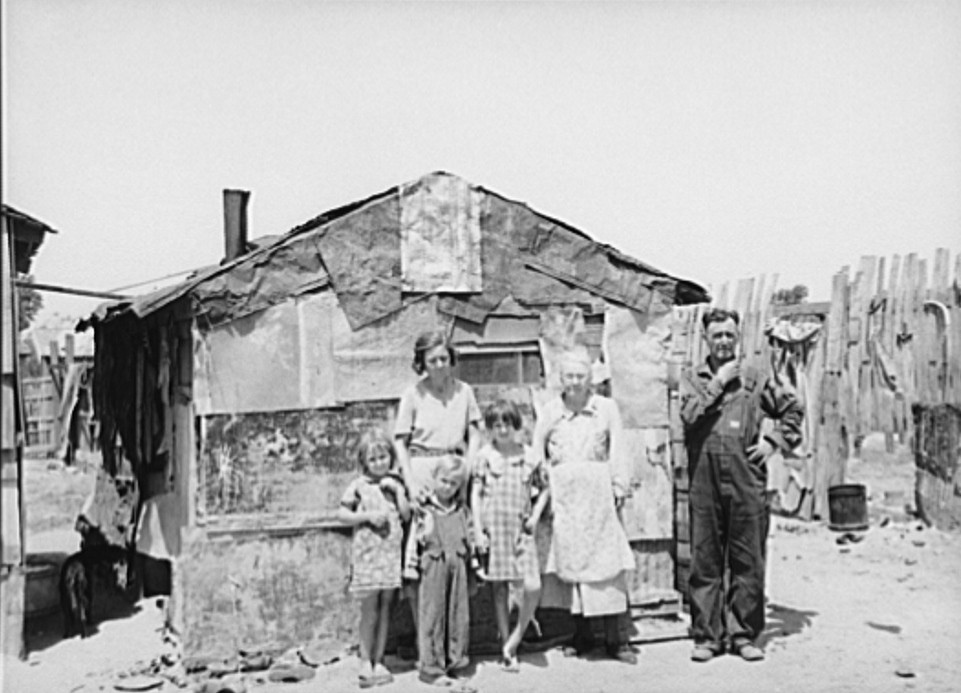
(Continued in Part II)
Check out genealogy and novels by Donna R. Causey

Faith and Courage: A Novel of Colonial America (Tapestry of Love) (Volume 2)
